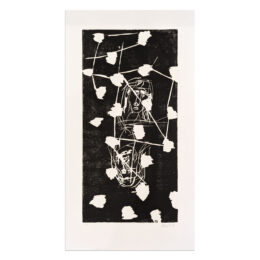


Over time, a large number of artists have practiced, revived and altered aspects of the original Expressionism movement which peaked at the turn of the 20th century. However, the most famous return to Expressionism was brought about by Georg Baselitz who went on to lead a revival that had a huge influence on the German art scene during the 1970s: Neo-Expressionism. By the 1980s, this rebirth had become an integral part of the return to a warm, sensual feel to artistic works across the world – and away from the stylistically distant, cool sparseness of Conceptualism and Minimalism.
A broad scope of artists, particularly those from the United States, started to create more expressive, emotional works which sought to reaffirm the redemptive power of art, particularly painting. The key emphasis was on including a wide variety of themes such as the historical, the mythological, the erotic, the cultural and the nationalist.
The Neo Expressionist artists, including Lucian Freud, Frank Auerbach, Francis Bacon, Miquel Barcelo, Louise Bourgeois and Clemente Francesco, depicted their subjects in a noticeably jarring, somewhat raw manner. Employing expressive, highly textural brushwork, sharp lines and intense colours, this new movement proudly went against the techniques and established beliefs what had preceded it.
Due to the fact that work by Neo Expressionist artists was so intricately entwined with commercialism and media hype typical of the Reagan era at the time, some American artists started to question its authenticity as art. This was simply due to the fact that Neo Expressionist art was bought and sold for higher prices than ever before and much of it was apparently motivated by money. Ironically, and somewhat tragically, it was this close relationship with large-scale commercialism that ultimately lead to the movement’s demise, something which wasn’t the case with Abstract Expressionism for example.
Because Neo Expressionism embraced and rejuvenated mythological and historical imagery (which was largely opposite to the modernists’ tendency to avoid any form of storytelling), some artists and scholars have since stated that Neo Expressionism lead to the evolution from Modernism to Postmodernism. Some of the most famous examples of Neo Expressionism pieces include Adieu (Georg Baselitz, 1982) and Café Deutschland I (Jörg Immendorff, 1977-78).